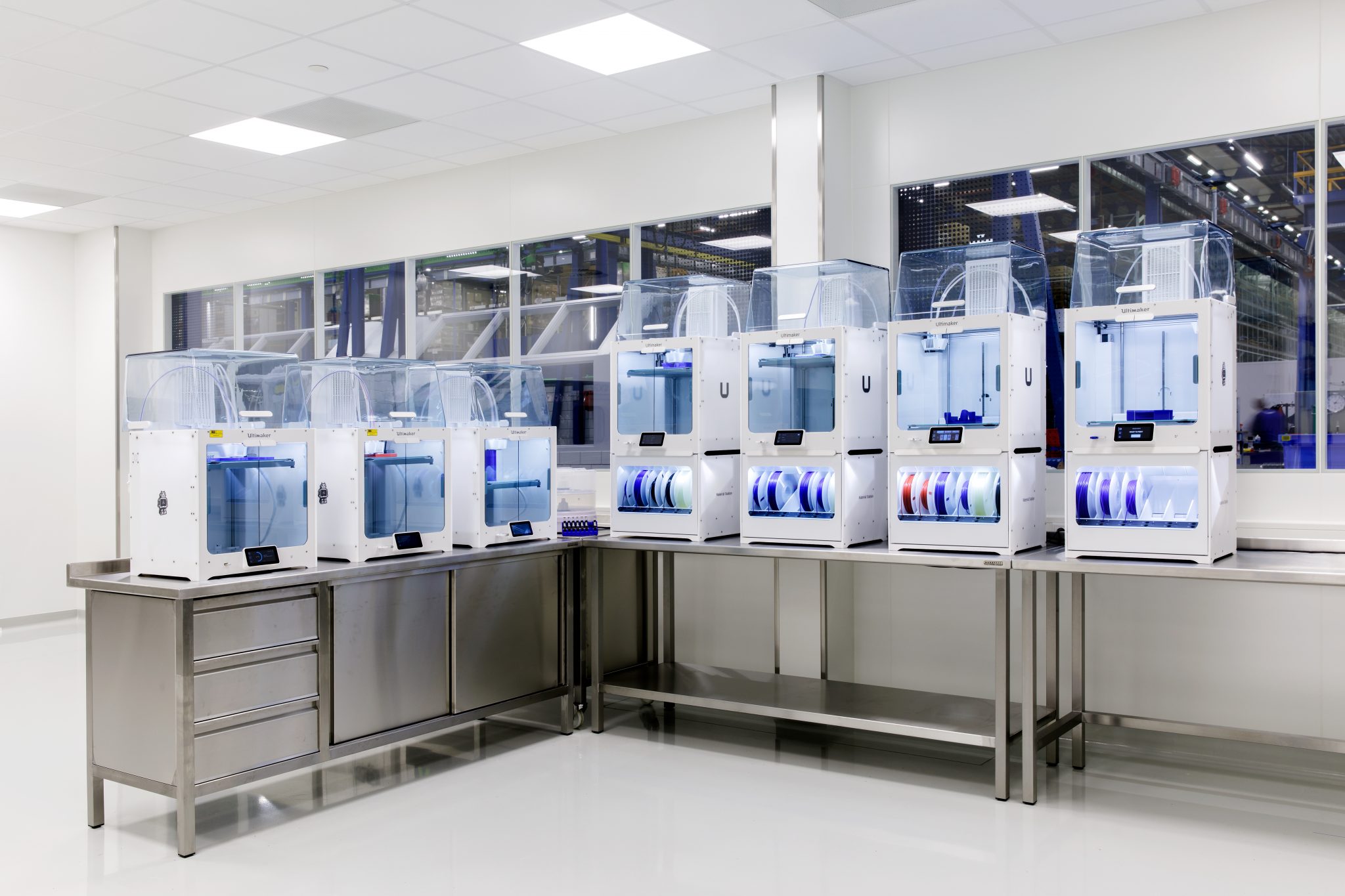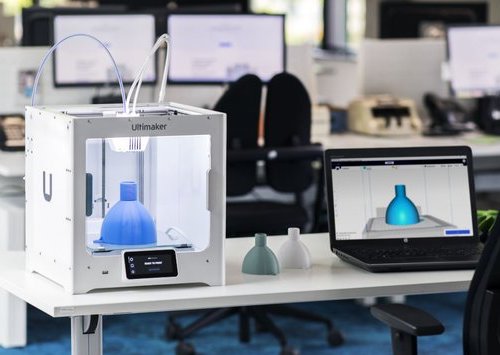3d Prints Affordable Continuous Flow Systems
Vancouver-based 3D printing start-up 3DQue has reported it has successfully proven the cost-effectiveness of its Quinly 3D printer automation upgrade on the Ultimaker S5.
Early test results have indicated that the Quinly upgrade on the Ultimaker S5 decreases printer operator time by 90 percent, while lowering cost per part by more than two-thirds. 3DQue believes its automation upgrade proves the cost-effectiveness of metal 3D printing for mass production.
"Lower up-front and per-part costs combined with less operator time and higher throughput without having to incur that high risk of part stacking is a game-changer for many manufacturers," said Mateo Pekic, 3DQue Co-founder. "Quinly allows companies to easily scale metal part production by automating their Ultimaker S5s they already have and are using for plastic parts."

3DQue's Quinly automation upgrade
Founded in 2018 by Pekic and entrepreneur Stephanie Sharp, 3DQue's goal is to provide makers and entrepreneurs with high-volume 3D printing capabilities. The company has already developed and launched its proprietary QSuite and QPoD product offerings, first unveiled at RAPID + TCT 2019.
The company first installed its QPoD platform at Mitsubishi Chemical Performance Polymers (MCPP), and the firm was able to conduct extensive material compatibility testing to examine its potential as an alternative to injection molding.
Essentially, the Quinly package enables those seeking to run a 3D printing business to ramp up their production without having to constantly monitor their products' progress. 3DQue launched its Quinly automation upgrade kit for Creality's Ender 3 machines in May. The kit includes subscription-free automation software, a gravity-assisted print bed and the STL files needed to print machine 'tilt' brackets.
In July, 3DQue extended the compatibility of Quinly to all Creality Ender 3 clones, such as the Aquila 3D printer from Voxelab, the consumer-centric brand of 3D printer manufacturer FlashForge. Through this, 3DQue hopes to extend the freedoms of autonomous high-volume 3D printing to thousands of engineers.

Scaling up metal 3D printing
According to 3DQue, the global metal goods market is worth over two trillion dollars, but for metal 3D printing to disrupt the market it must be able to scale for mass production in a cost-effective manner. The company has identified three main bottlenecks to scaling of metal printing – high labor, equipment, and operating costs.
3DQue predicts that, based on current methods, for the metal prints market to reach even one percent market share by 2025, companies would have to train more than four million skilled operators and spend some two trillion dollars in equipment.
With the firm's Quinly automation upgrade, however, it claims that $20 billion in metal prints could be achieved with just 400,000 skilled operators and $300 billion in automated equipment. 3DQue also states that printed parts would be less than half the cost of metal parts printed today.
"Shifting 3D printing from a batch process to a continuous-flow process, automating existing printers, and connecting production through digital supply chains allows companies to cost-effectively produce large volumes of parts in-house or onsite at customers," said Stephanie Sharp, CEO of 3DQue Systems. "By reshoring production, companies have more flexibility, lower inventory, and secure their supply chain.
"And they eliminate bulk shipping and warehousing, two of the major sources of GHGs, increasing sustainability while reducing costs. It's a win-win."

Automated metal testing results
The Ultimaker S5 industrial 3D printer is based on fused filament fabrication (FFF) technology. Initial tests of 3DQue's automation upgrade on the machine revealed that the capital needed to start high-volume printing could potentially drop by 90 percent, reducing the upfront investment costs required to fully automate the printer for high-volume metal printing.
3DQue printed multiple test parts using the Quinly-automated Ultimaker S5 and BASF's Ultrafuse 316L and Polymaker's PolyCast filaments. Part costs reportedly dropped by 63 percent compared to those produced via 3D printer manufacturer's Desktop Metal's bound metal deposition system (BMD). Continuing the comparison with Desktop Metal's BMD technology, the tests revealed that fourteen Quinly-automated Ultimaker S5's would provide similar capacity (63,230 parts per year), but would cost up to 10 times less and take up half the floor space.
3DQue's Quinly upgrade eliminates manual tasks such as removing parts, applying adhesives, uploading files, and so on. The tests on the Ultimaker S5 showed that Quinly was able to scale production without bumping up the number of operators needed to run the machines, and in fact decreased operator time by over 90 percent.
As such, the Quinly automation upgrade was proven to reduce labor and equipment costs while providing more flexible, on-demand production. In turn, 3DQue believes the upgrade is capable of achieving both affordable and scalable metal 3D printing.
Subscribe to the 3D Printing Industry newsletter for the latest news in additive manufacturing. You can also stay connected by following us on Twitter and liking us on Facebook.
Looking for a career in additive manufacturing? Visit 3D Printing Jobs for a selection of roles in the industry.
Subscribe to our YouTube channelfor the latest 3D printing video shorts, reviews and webinar replays.
Featured image shows Ultimaker S5 3D printers at ERIKS' facility. Photo via Ultimaker.
Source: https://3dprintingindustry.com/news/3dque-automates-metal-3d-printing-for-affordable-mass-production-196034/
0 Response to "3d Prints Affordable Continuous Flow Systems"
Post a Comment